TABLE OF CONTENTS
- Overview
- Trigger Conditions
- Where can I find my renewals?
- What case data is transferred to PAVIS?
- Fields Populated from Pavis
- Get immediate updates: manual process
- Summary of Best Practices
Overview
This process allows Equinox Corporate+ to automatically:
Send renewal data to Pavis
Receive renewal date, grace period and price information from Pavis
Create the Renewal (Annuity) record automatically in EC+
The system runs in the background and does not require manual user intervention
Trigger Conditions
The Pavis Import Request is scheduled weekly, it will get cases where:
Case Type = Patent / Trademark / Design
Type of Order = Single Order or Standing Order
Payment Management By = Pavis
Pavis Registration = False
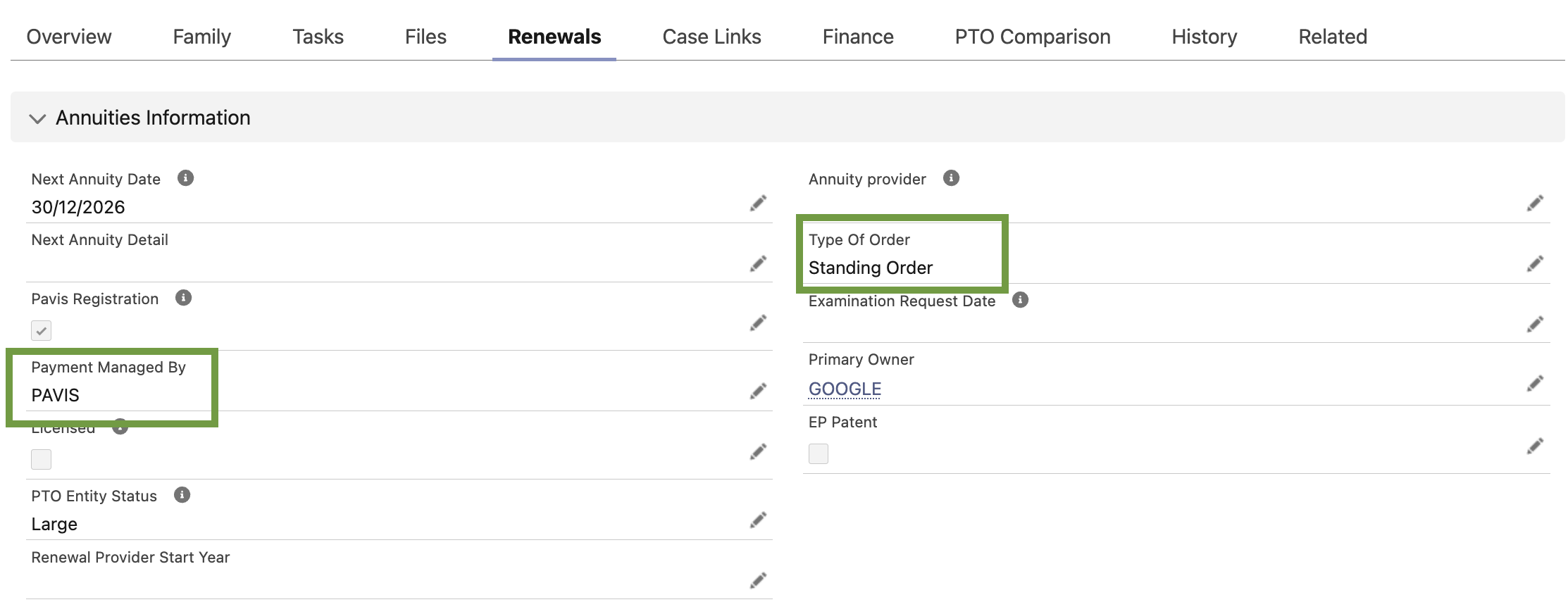
⚠️ Without this information, the case won't be sent to Pavis.The “Pavis Registration” Importance
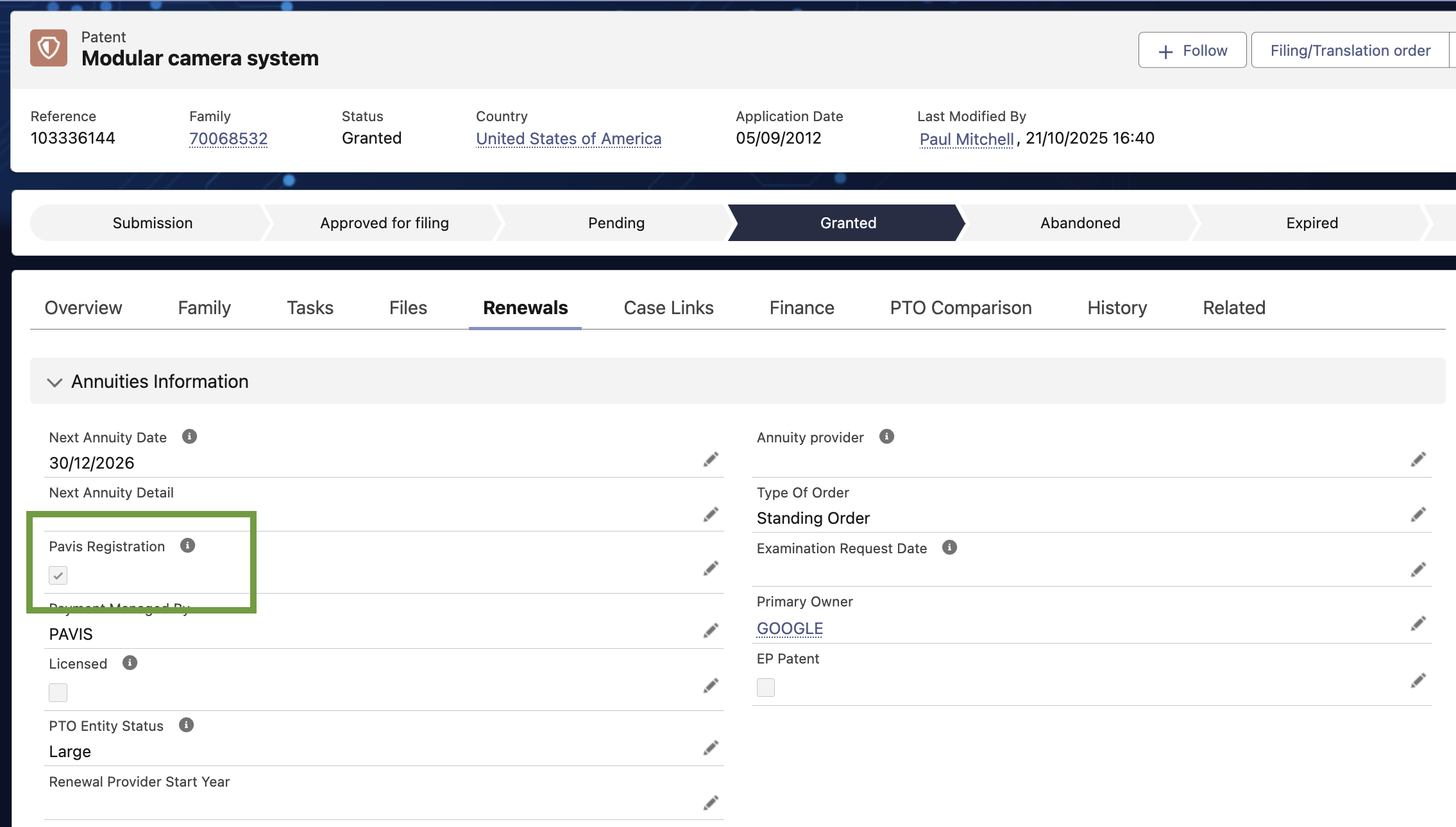
Why It Matters:
This field ensures that the case is recognized and accepted by Pavis before future renewals.
It is set to TRUE only when we get a successful answer from Pavis, meaning that the data is correct.
If unchecked, no automatic payment, update, or renewal instructions will be processed for the asset.
If unchecked, it will be sent again when the next weekly batch will run.
Used as a filter for all subsequent renewal or standing order workflows.
⚠️ Do not manually check this field. You should not be able to edit this field. It is automatically maintained by the system based on API responses. You
Where can I find my renewals?
In the Renewals tab, you can access different views that permit to access your renewals
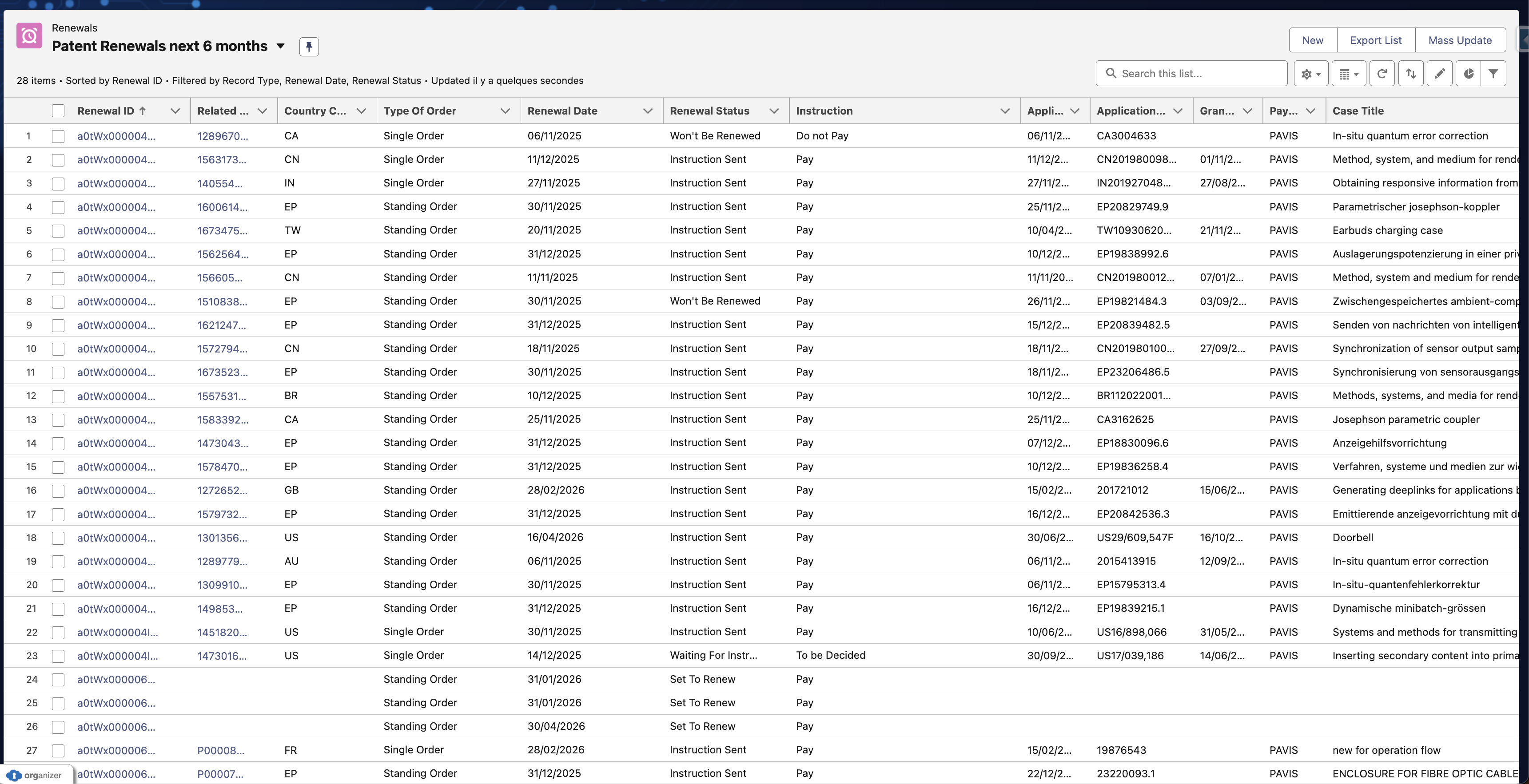
You cant select the right view:
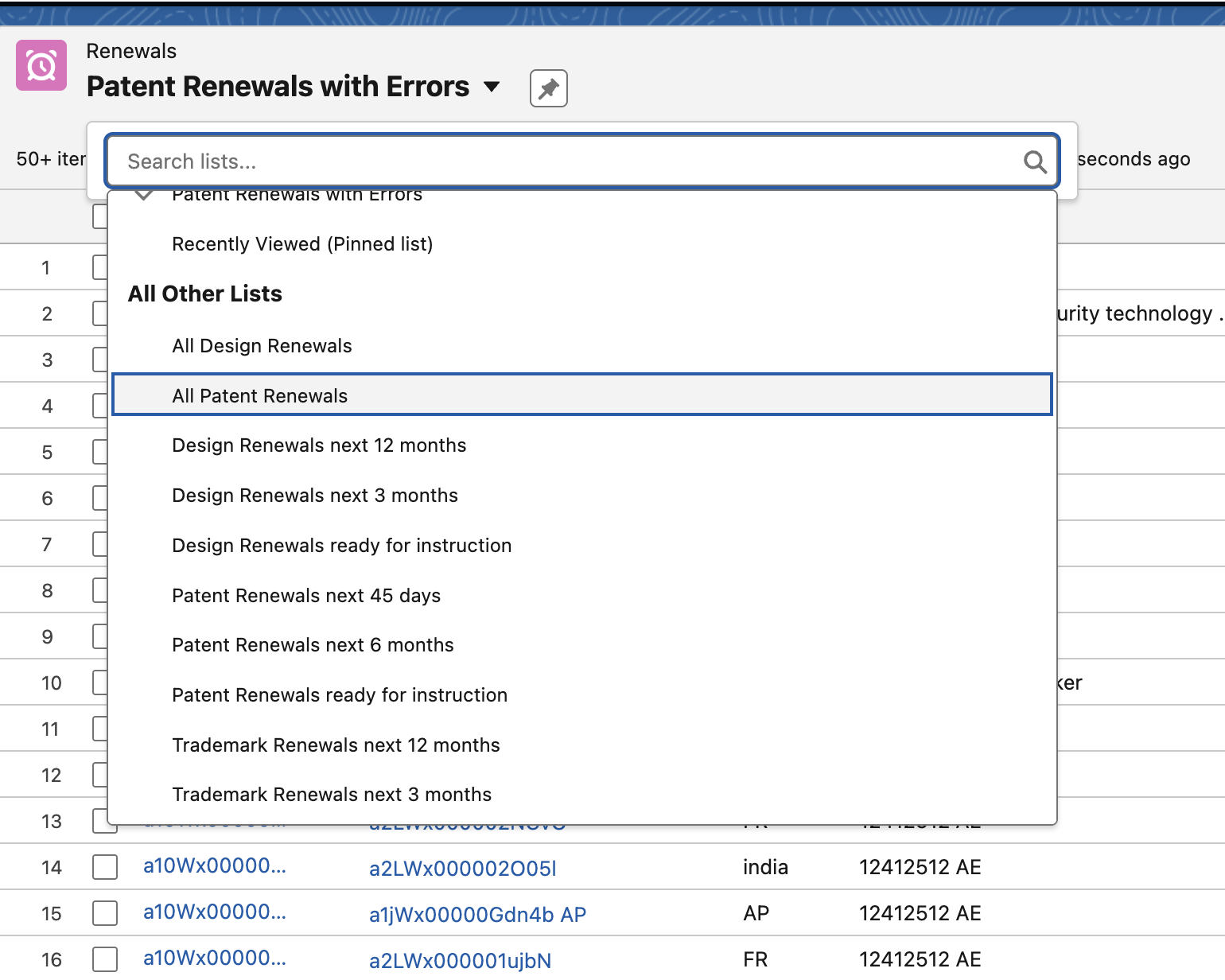
What case data is transferred to PAVIS?
For information on the data is transferred to PAVIS and any specific data requirements, please see our article
Fields Populated from Pavis
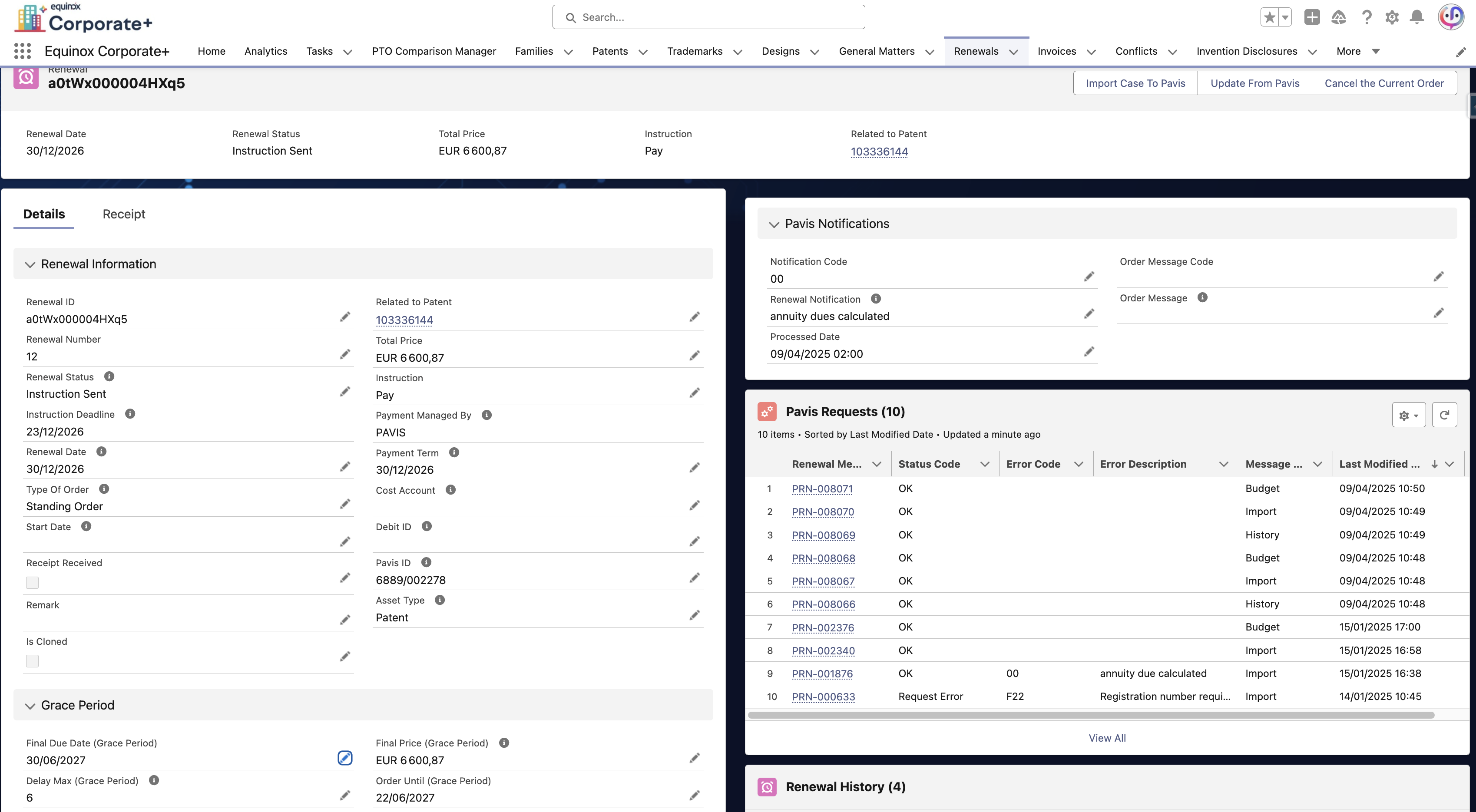
| Equinox Field Label | API Tag | Description |
|---|---|---|
| Renewal Date | <due_date> | Renewal due date |
| Renewal Number | <annuity> | Year of protection |
| Delay Max (Grace Period) | <delay> | Number of months |
| Payment Term | <payment_term> | Term to pay the official fee |
| Order Until | <order_until> | Order required until |
| Total Price | <price> | Total amount due |
| Official Fee | <official_fee> | Official authority fee |
| Service Fee | <service_fee> | Pavis fee |
| Final Due Date (Grace) | <payment_term> | Last valid due date |
| Order Until (Grace) | <order_until> | Order required until (Grace period) |
| Final Price (Grace) | <price> (max delay) | Total amount due (Grace period) |
All these data are updated during the full renewal lifecycle. e.g: If the price has changed during the renewal flow, you will get the final price updated when the renewal is completed
Get immediate updates: manual process
If you don't want to wait one week to get updates on due date and price information, you can manually update and Pavis and get updates loaded in your system:
On the renewal page:
- You can click on the Import case to Pavis button in order to update Pavis with the last case information
- You can click on the Update from Pavis button in order to get the last updates from Pavis
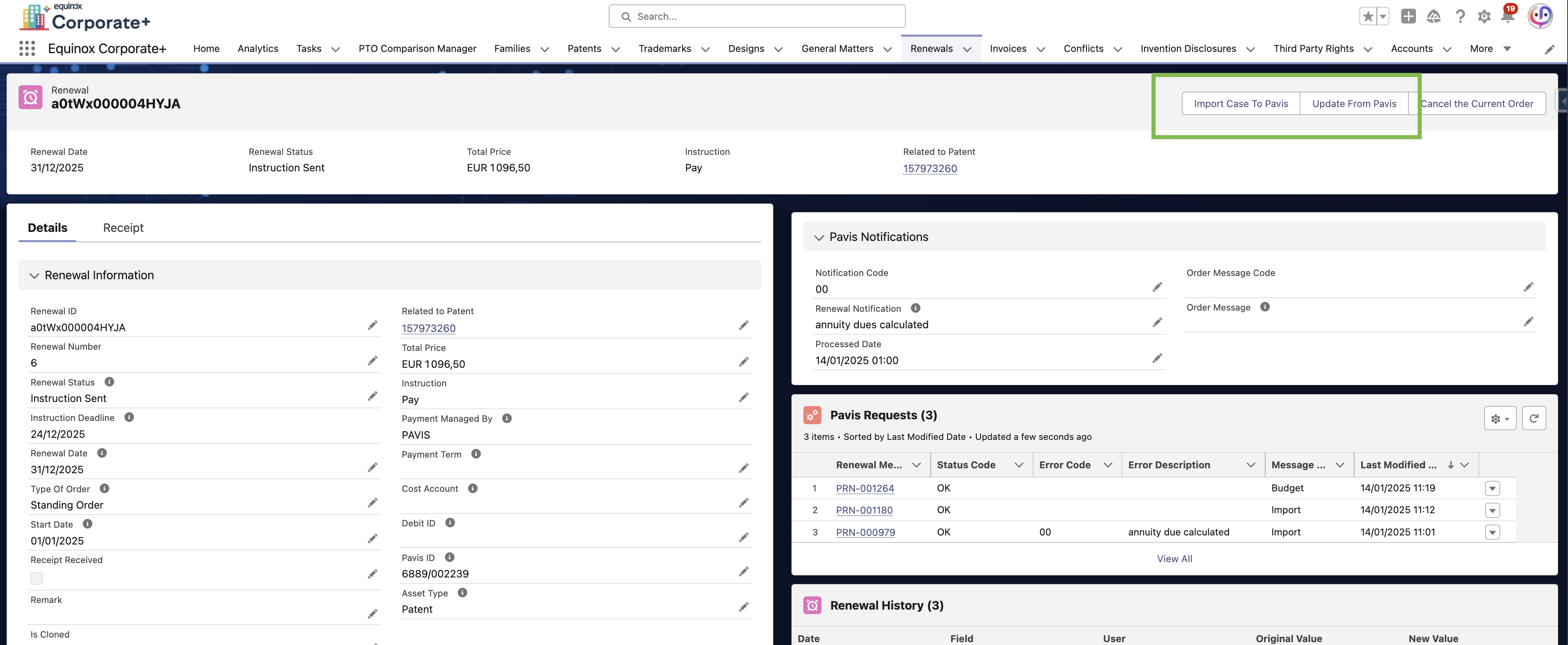
Summary of Best Practices
✅ Always ensure Pavis Registration is checked
- ✅ Verify key IP data (grant, application number, country) before Pavis onboarding
- ✅ The system automatically handles data transformation, API calls, and record creation.
- ✅ Do not manually create annuity records — they are generated by automation.
- ✅ Check Pavis Error(s)
